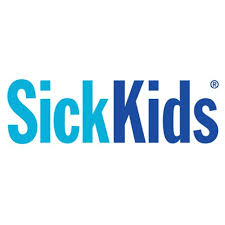The Hospital for Sick Children (SickKids) in Toronto has launched a multicenter, multi-treatment clinical registry to track and evaluate a range of less invasive treatments for pediatric osteoid osteoma.
 Osteoid osteomas are extremely painful, but benign, bone tumors that occur most commonly in children and young adults. Treatment options for these patients fall into three categories: surgical, minimally invasive or percutaneous, and noninvasive. While traditional surgical resection is still used to remove these tumors, less invasive, image-guided approaches – such as thermal ablation that kills cells by heating or freezing them – are more commonly utilized today. Percutaneous options include ablation via radiofrequency, laser, microwave, or cryotherapy as well as removal with CT-guided excision, sclerosis with ethanol injection, and dissolution with plasma-based coblation. The only noninvasive method used to treat osteoid osteomas is thermal ablation via focused ultrasound.
Osteoid osteomas are extremely painful, but benign, bone tumors that occur most commonly in children and young adults. Treatment options for these patients fall into three categories: surgical, minimally invasive or percutaneous, and noninvasive. While traditional surgical resection is still used to remove these tumors, less invasive, image-guided approaches – such as thermal ablation that kills cells by heating or freezing them – are more commonly utilized today. Percutaneous options include ablation via radiofrequency, laser, microwave, or cryotherapy as well as removal with CT-guided excision, sclerosis with ethanol injection, and dissolution with plasma-based coblation. The only noninvasive method used to treat osteoid osteomas is thermal ablation via focused ultrasound.
Over the next five years, more than 30 international sites will collect outcomes data from 900 children treated for osteoid osteomas with nonsurgical methods; at least 200 of whom have undergone focused ultrasound therapy. However, if there is a potential benefit, the registry could stay open indefinitely–especially if other types of focused ultrasound treatment are added in the future. The data infrastructure was designed to capture clinical information for any type of focused ultrasound treatment.
“Registries are powerful research tools,” said initiator of the study and principal investigator, Michael J. Temple, MD, SickKids Pediatric Interventional Radiologist and Associate Professor at the University of Toronto. “This registry will allow us to directly compare the outcomes of focused ultrasound therapy with all other types of treatment using real-world observational evidence.”
Dr. Temple continued: “Although randomized, controlled trials are considered the gold standard in clinical research, the inherent rigidity of their protocols and their implementation make them difficult to run and does not allow for adaptation. If new technologies arise, or if new information needs to be collected, a registry protocol can be modified with relative ease. Pooling data from multiple sites and performing interim analyses will allow us to fine tune our approach as we gain more experience with this new technology at a pace that would simply not be possible without multi-institutional collaboration.”
Along with SickKids in Canada, eight leading focused ultrasound treatment sites will participate, including the University of California, San Francisco (UCSF); Stanford University; Children’s National Medical Center; and Cincinnati Children’s Hospital Medical Center in the United States; Sapienza University, Rizzoli Orthopedic Institute, and San Salvatore Hospital in Italy; and PGI Chandigarh in India. The percutaneous portion of the registry will be conducted at 28 sites on five continents.
The registry’s overarching goals are to:
- Optimize patient selection and focused ultrasound treatment protocols to allow for more effective treatment of osteoid osteoma.
- Show that focused ultrasound is viable and effective as the only noninvasive and radiation-free treatment option.
- Provide a platform that will be the first step in a larger collaborative effort to show that focused ultrasound is an effective therapeutic tool that can be used to treat multiple types of diseases.
The registry database should provide large-scale evidence on short- and long-term outcomes of each treatment method. Any patient who undergoes non-surgical osteoid osteoma treatment of at an enrolled institution can take part in the registry, but because the percutaneous portion was developed in affiliation with the Society for Pediatric Interventional Radiology, only pediatric patients will be enrolled in the percutaneous arm at this time. The registry will expand to include adults in the near future and can be easily modified to collect data on surgical options as more sites are added.
The registry was designed with the primary goal of comparing osteoid osteoma treatments. However, it is quite possible that the large pool of data could be used for other research projects. A process has been created to allow any researcher who could potentially benefit from using the data to apply for access. When the database closes, the data will likely be published as an open source document. The hope is that the registry could eventually provide evidence to allow for reimbursement and regulatory approval of focused ultrasound treatment for this indication.
The pediatric osteoid osteoma registry was created following discussions at the IGNITE consortium meeting held in Cincinnati in 2015.
Multimedia
See Dr. Temple explain how focused ultrasound technology works >
Patient Stories
Watch and read as young patients explain their dianosis and how focused ultrasound changed their lives.
